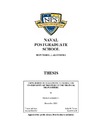The impact of low-level moisture errors on model forecasts of an MCS observed during PECAN
| dc.contributor.author | Peters, John M. | |
| dc.contributor.author | Nielsen, Erik R. | |
| dc.contributor.author | Parker, Matthew D. | |
| dc.contributor.author | Hitchcock, Stacey M. | |
| dc.contributor.author | Schumacher, Russ S. | |
| dc.date.accessioned | 2017-09-25T17:06:56Z | |
| dc.date.available | 2017-09-25T17:06:56Z | |
| dc.date.issued | 2017-09 | |
| dc.identifier.citation | J.M. Peters, E.R. Nielsen, M.D. Parker, S.M. Hitchcock, R.S. Schumacher, "The impact of low-moisture errors on model forecasts of an MCS observed during PECAN," Monthly Weather Review, v.145, (September 2017), pp. 3599-3624. | en_US |
| dc.identifier.uri | https://hdl.handle.net/10945/55930 | |
| dc.description | The article of record as published may be found at http://dx.doi.org/10.1175/MWR-D-16-0296.1 | en_US |
| dc.description.abstract | This article investigates errors in forecasts of the environment near an elevated mesoscale convective system (MCS) in Iowa on 24–25 June 2015 during the Plains Elevated Convection at Night (PECAN) field campaign. The eastern flank of this MCS produced an outflow boundary (OFB) and moved southeastward along this OFB as a squall line. The western flank of the MCS remained quasi stationary approximately 100 km north of the system’s OFB and produced localized flooding. A total of 16 radiosondes were launched near the MCS’s eastern flank and 4 were launched near the MCS’s western flank. Convective available potential energy (CAPE) increased and convective inhibition (CIN) decreased substantially in observations during the 4 h prior to the arrival of the squall line. In contrast, the model analyses and forecasts substantially underpredicted CAPE and overpredicted CIN owing to their underrepresentation of moisture. Numerical simulations that placed the MCS at varying distances too far to the northeast were analyzed. MCS displacement error was strongly correlated with models’ underrepresentation of low-level moisture and their associated overrepresentation of the vertical distance between a parcel’s initial height and its level of free convection (DzLFC, which is correlated with CIN). The overpredicted DzLFC in models resulted in air parcels requiring unrealistically far northeastward travel in a region of gradual meso-a-scale lift before these parcels initiated convection. These results suggest that erroneous MCS predictions by NWP models may sometimes result from poorly analyzed low-level moisture fields. | en_US |
| dc.description.sponsorship | National Science Foundation Awards | en_US |
| dc.description.sponsorship | NOAA/Office of Atmospheric Research | en_US |
| dc.format.extent | 26 p. | en_US |
| dc.publisher | American Meteorological Society | en_US |
| dc.rights | This publication is a work of the U.S. Government as defined in Title 17, United States Code, Section 101. Copyright protection is not available for this work in the United States. | en_US |
| dc.title | The impact of low-level moisture errors on model forecasts of an MCS observed during PECAN | en_US |
| dc.type | Article | en_US |
| dc.contributor.corporate | Naval Postgraduate School (U.S.) | en_US |
| dc.contributor.department | Meteorology | en_US |
| dc.description.funder | AGS-PRF 1524435 (NSF) | en_US |
| dc.description.funder | AGS-1359727 (NSF) | en_US |
| dc.description.funder | AGS-1359726 | en_US |
| dc.description.funder | Grant (NOAA) | en_US |





